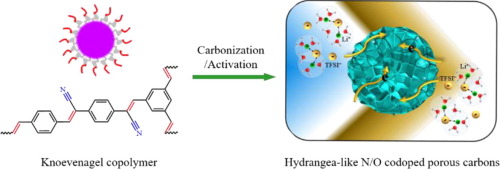Chemical Engineering Journal ( IF 13.3 ) Pub Date : 2020-01-25 , DOI: 10.1016/j.cej.2020.124211 Gang Wang , Jiayu Gao , Yike Fu , Zhaohui Ren , Jie Huang , Xiang Li , Gaorong Han

|
The anticancer efficacy of chemodynamic therapy (CDT) is considerably restrained by the inadequate content of H2O2 within tumor microenvironment (TME), unexpected oxidation of Fenton agents and low targeting efficiency of particulate therapeutic platforms. Herein for the first time, an implantable CDT platform was designed and synthesized by combining Fe0 nanocrystal embedded mesoporous silica nanoparticles (FeMSN) and PCL-gelatin fibres (PG fibres), denoted as [email protected] fibres. FeMSN was fabricated via in situ reduction of ferrous ions within the mesopores of MSNs, and assembled at the surface of electrospun PG fibres by electrostatic interaction to form a fibrous mesh. The findings reflected that, in an acid condition, FeMSN nanoparticles can liberate from the composite fibres, and be effectively uptaken by 4T1 cancer cells. The FeMSN released may react with oxygen to generate H2O2 in the acidic microenvironment, and subsequently transform H2O2 to intracellular hydroxyl radicals, inducing enhanced cell-killing effect. By implanting the composite fibres locally at the tumor site of mice, promoted anticancer efficacy was observed with comparison of the intratumoral-injected FeMSN nanoparticles. This study suggests that [email protected] composite fibres can serve as a potential localized PDT platform for effective antitumor purposes, which may spark a series of follow-on investigations for localized cancer therapeutic technology.
中文翻译:

自备H 2 O 2的可植入复合纤维用于局部化学动力学治疗
肿瘤微环境(TME)中H 2 O 2的含量不足,芬顿剂的意外氧化以及微粒治疗平台的靶向效率低,极大地限制了化学动力疗法(CDT)的抗癌功效。本文首次通过结合Fe 0设计并合成了可植入CDT平台。纳米晶嵌入的介孔二氧化硅纳米颗粒(FeMSN)和PCL-明胶纤维(PG纤维),表示为[电子邮件保护]纤维。FeMSN是通过原位还原MSNs中孔中的亚铁离子而制成的,并通过静电相互作用在电纺PG纤维的表面组装成纤维网。研究结果表明,在酸性条件下,FeMSN纳米颗粒可以从复合纤维中释放出来,并被4T1癌细胞有效摄取。释放的FeMSN可能会与氧气反应,在酸性微环境中生成H 2 O 2,然后转化H 2 O 2对细胞内的羟基自由基,诱导增强的细胞杀伤作用。通过将复合纤维局部植入小鼠的肿瘤部位,与瘤内注射的FeMSN纳米粒子进行比较,观察到了增强的抗癌功效。这项研究表明,[电子邮件保护的]复合纤维可以作为潜在的局部PDT平台,以实现有效的抗肿瘤目的,这可能会引发一系列针对局部癌症治疗技术的后续研究。











































 京公网安备 11010802027423号
京公网安备 11010802027423号